Exploring Bellver Castle felt like stepping into another world perched above Palma. The castle’s round shape is a rare find in Europe, and honestly, it felt like stumbling on a hidden gem high up on its hill.
What really sets Bellver Castle apart? The breathtaking panoramic view over the city and bay—a scene that made me stop and just soak it all in.
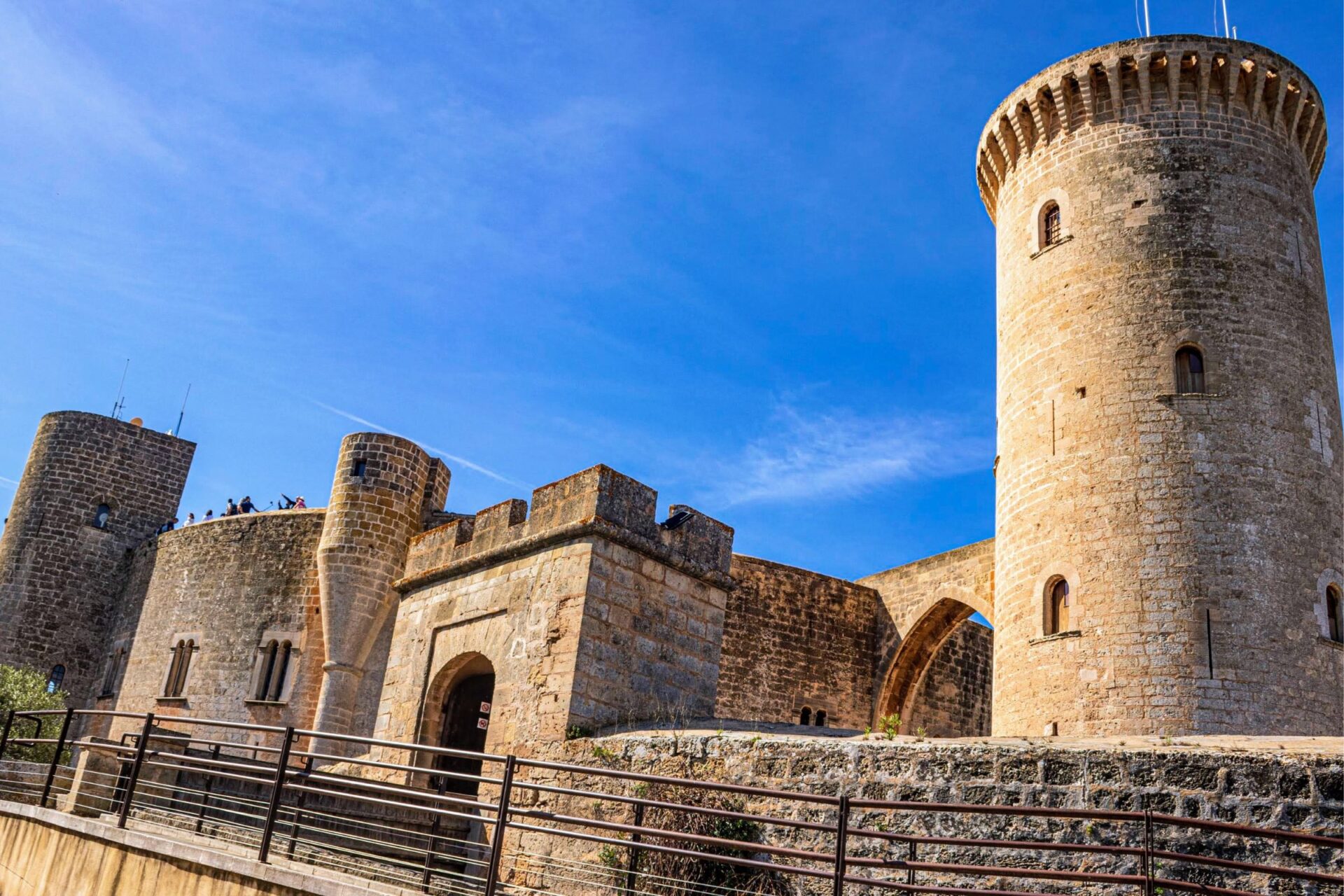
As I wandered the ancient, circular walls, I saw the mix of Gothic architecture and Mallorca’s lush landscape everywhere I looked. It’s no wonder people call this place one of Mallorca’s most iconic landmarks.
Every turn revealed a new angle of Palma or the Mediterranean sparkling in the distance. The uphill walk to the castle added a little adventure, making the arrival feel extra rewarding.
I loved how the 14th-century fortress’s history mingled with the energy of modern Palma. This spot quickly became a highlight of my trip, and I’d recommend it to any traveler.
Bellver Castle: The History Behind the Iconic Round Walls
Bellver Castle’s striking circular design grabs your attention right away. As I explored these old walls, I found layers of stories—royal dreams, fierce battles, and all the changes across centuries.
Origins and Construction
Climbing the winding paths to Bellver Castle, I noticed how different it looked from any other castle I’d seen. The round shape isn’t just eye-catching—it’s unique in Spain.
King James II of Majorca kicked off construction in the early 14th century. The castle started as a royal residence and a strong fortress.
Tall limestone walls wrap around a central courtyard, with three smaller towers and one main tower giving the castle its symmetry. This design let defenders keep an eye in every direction.
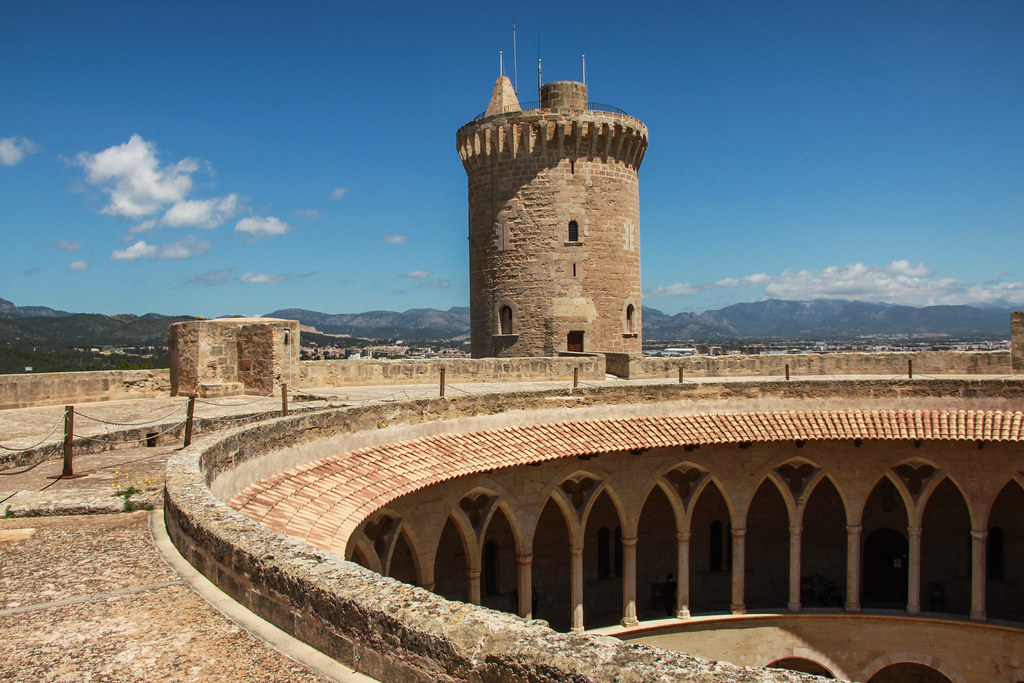
Builders used Catalan Gothic styles, blending elegance with practical defenses. Even now, the sturdy stonework stands the test of time, and every curved wall hints at the vision and skill behind it.
Royal and Political Significance
Walking through the grand gateway, I pictured medieval nobles and kings calling Bellver Castle home. King James II and his court lived here, enjoying comfort and safety from enemies.
The castle’s hilltop spot gave the royals a strategic edge, both for watching the sea and overseeing the city. Over the years, Bellver became more than just a royal home.
Whoever controlled the castle held real power over Majorca. The castle changed hands during wars and power struggles, especially as Spain’s major powers shaped the island’s future.
Political prisoners landed in the towers too, their stories echoing through the stone—tales of lost freedom and shifting alliances.
Transformation Over the Centuries
Bellver Castle never stuck to just one purpose. In later years, the fortress became a military prison, holding revolutionary figures and political opponents.
The echo of chains and whispered stories in dark cells give the castle a haunting edge. These days, those grim times feel distant.
Bellver now welcomes travelers like me as a museum, inviting everyone to walk its halls and learn its history. The displays show artifacts, old maps, and details about life in ancient Palma.
The shift from royal palace to cultural site keeps Bellver Castle alive as a piece of Majorca’s heritage, always changing with the times.
Discovering Palma: Bellver Castle’s Connection to the City
Bellver Castle rises above Palma, tying together history, architecture, and killer views. Exploring this fortress helped me see how closely it’s linked to the city, both in its spot and in what it lets you see.
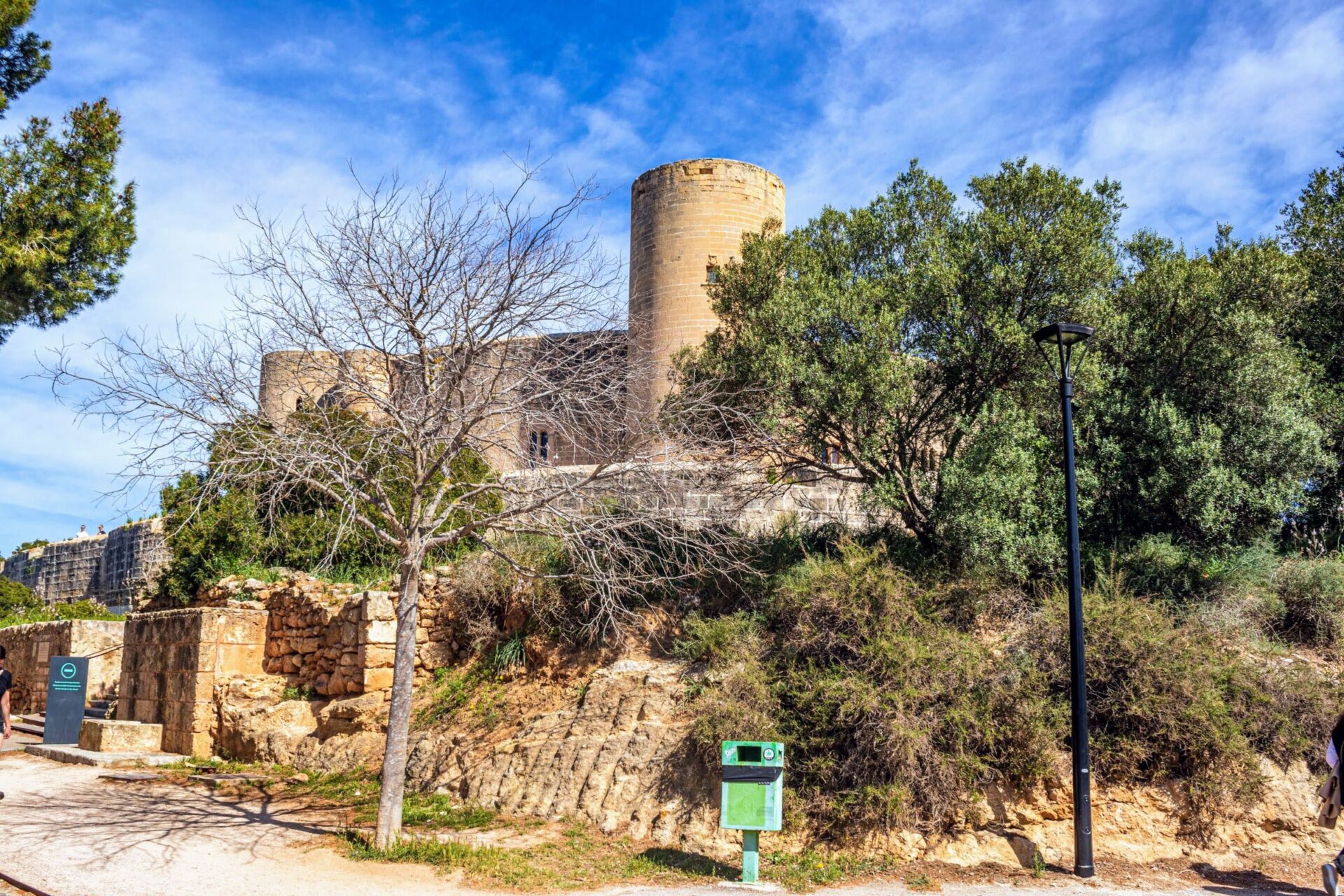
A Unique Position Overlooking Palma
Bellver Castle sits on a hill about 3 kilometers west of Palma’s center. The name Bellver means “beautiful view” in Catalan, and it’s honestly spot-on.
From its round terraces, I could see the city buzzing below and the blue Bay of Palma stretching out for miles. The castle’s circular design is rare in Spain and gave me the feeling of being wrapped in history.
Walking along the ramparts, I spotted neighborhoods, winding streets, and the old port. Whoever picked this spot clearly knew what they were doing—it’s perfect for defense and for taking in all of Palma.
Whether I looked north to the Tramuntana mountains or south over the city’s rooftops, there was always something new to catch my eye. It’s definitely one of the best places for photographs or just quietly taking in Palma’s unique charm.
Unmissable Sights: Palma Cathedral & Surroundings
One highlight for me was spotting the Palma Cathedral, or La Seu, from the castle. Even from far away, the cathedral’s Gothic towers and golden stone caught the sunlight and drew my eyes across the city.
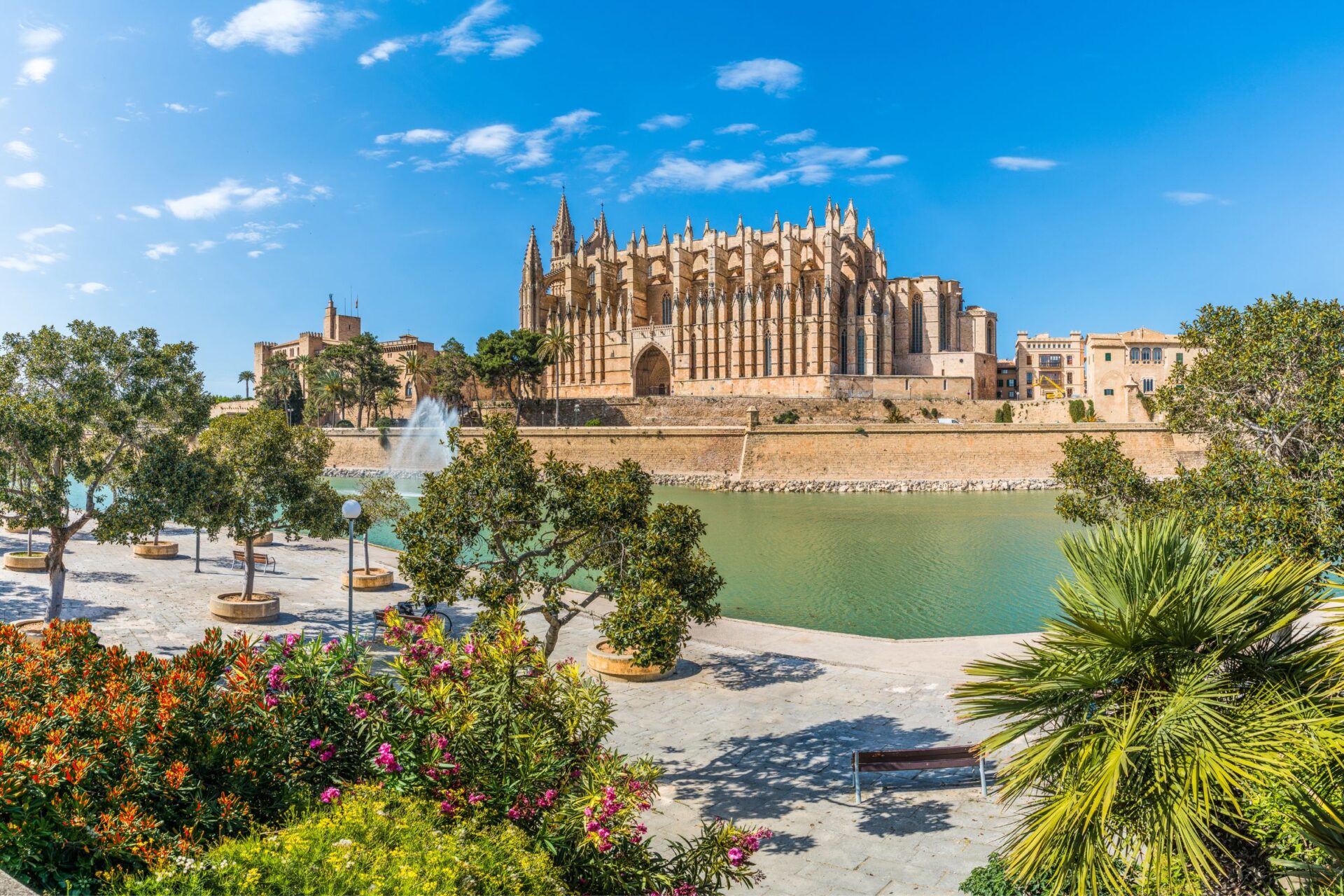
From the castle terrace, I could trace the old city wall and see landmarks like the Almudaina Palace and the harbor where cruise ships and fishing boats gather. The view really put Palma de Mallorca into perspective—the city’s old and new sides, all surrounded by sea and mountains.
If you visit, bring binoculars or a camera with a good zoom. You’ll want close-up shots of the cathedral or the lively street scenes below. Bellver Castle isn’t just about the fortress itself; it’s also about seeing how all of Palma fits together from one incredible spot.
Panoramic Views That Took My Breath Away
Standing atop Bellver Castle gave me a whole new perspective on Palma de Mallorca. The 360-degree views from the fortress made every corner of the city and even the distant mountains feel close.
Best Photo Spots from the Castle
My camera barely got a break during my visit. The castle’s rooftop walkway circles the fortress, offering endless chances for photos.
Some of my favorite shots came from the highest battlements. Looking over the stone walls, I caught sweeping views of Palma below, framed by the deep blue Mediterranean.
A few spots are especially popular for photos:
- The northeast section, where the bay and harbor glimmer in the sun
- The western edge, perfect for catching dusk over the island
- The round central courtyard, with its elegant Gothic arches
Early morning or late afternoon light makes the colors pop. If you have a wide-angle lens, bring it—this place deserves more than a phone snap.
Seeing the Bay of Palma and Serra de Tramuntana
From the top of the castle, I could see much more than just the city. The Bay of Palma spread out below, busy with boats and lined with sandy beaches.
Turning north, the jagged peaks of the Serra de Tramuntana stood out in the distance. On a clear day, the mountains almost felt within reach, their green slopes rolling toward the horizon.
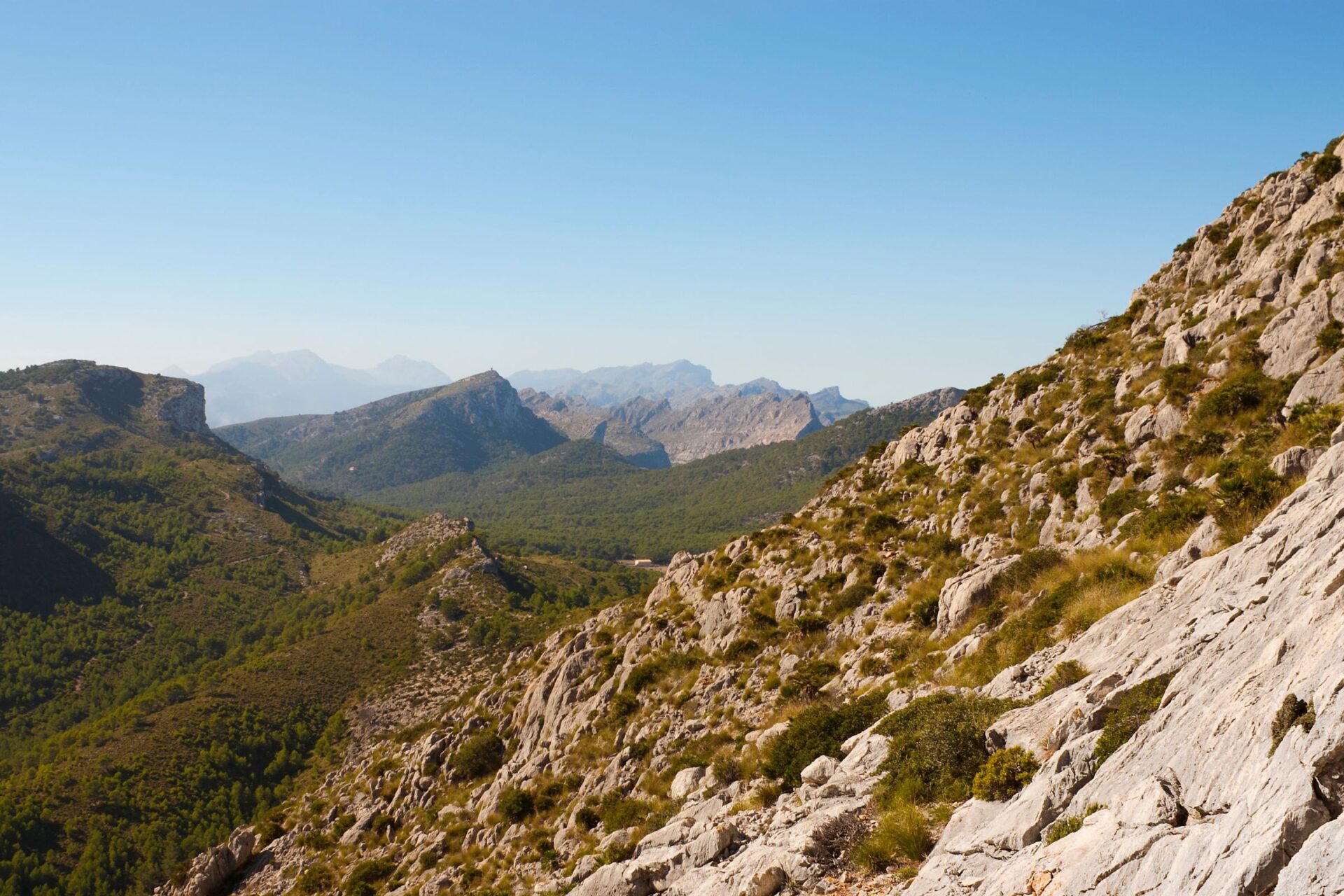
I found myself pausing just to watch and take it all in. The mix of city, shifting blue water, and silent mountains made me appreciate Palma’s unique setting even more.
Why the Castle’s Round Structure Matters
Bellver Castle stands out for more than just its height—it’s the rare circular design that really makes it special. Unlike the usual square fortresses, its round walls give unbroken views in every direction.
Walking the ring-shaped ramparts, I could look out over Palma, the sea, and the hills with no blind spots. The design once made defense easier, but now it means visitors get the broadest panorama.
I realized those curved walls didn’t just shape history—they shape how you see Palma de Mallorca today. Bellver’s unique circle brings the whole island into view, turning every step into a new vantage point.
Inside Bellver Castle: Exploring Towers, Courtyards, and Exhibitions
Walking through Bellver Castle, I found myself surrounded by medieval architecture, sweeping views, and quiet corners full of history. The castle’s circular shape influences every step, whether I was looking up at the sky from the courtyard, climbing old stones for a city view, or wandering between museum displays.
The Central Courtyard Experience
Stepping into the central courtyard, I immediately noticed its open, round shape. The arches and columns created a peaceful space that felt both grand and welcoming.
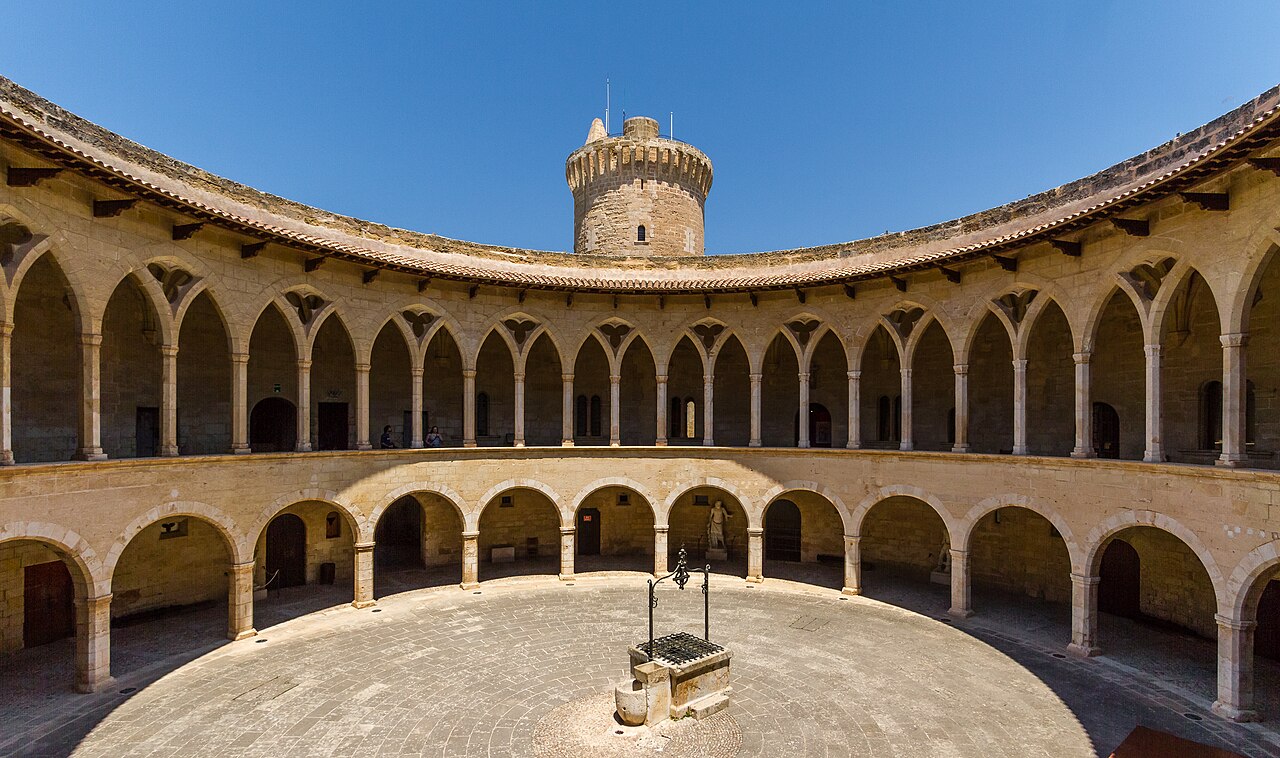
Image Source: Wikimedia Commons
Sometimes, sunlight made patterns on the stone. On windy days, the sky felt endless above. The courtyard wasn’t just for show—it once connected important rooms and gave people a safe place to gather.
Today, it’s easy to picture knights and guests mingling there, their footsteps echoing in the round space. I paused to take in the details—the well at the center, the Gothic arches, and the views of the walls above.
Signs in English and Spanish explained some of the history. I often saw other visitors pausing too, just soaking it all in.
Climbing the Towers for Vistas
Climbing one of Bellver Castle’s towers was a workout, but the views made every step worth it. Narrow stone stairs twisted upward, leading me to a lookout high above Palma and the bright blue bay.
At the top, I could see cruise ships in the port, Palma’s rooftops, and pine forests all around. For me, this was the castle’s highlight—the city, mountains, and sea stretched out in every direction.
I spent time with my camera, snapping photos and just watching clouds drift by. The steps felt worn and ancient, so I’d suggest sturdy shoes for the climb.
On a clear day, you can spot not just the city and port, but sometimes even distant mountains on the horizon.
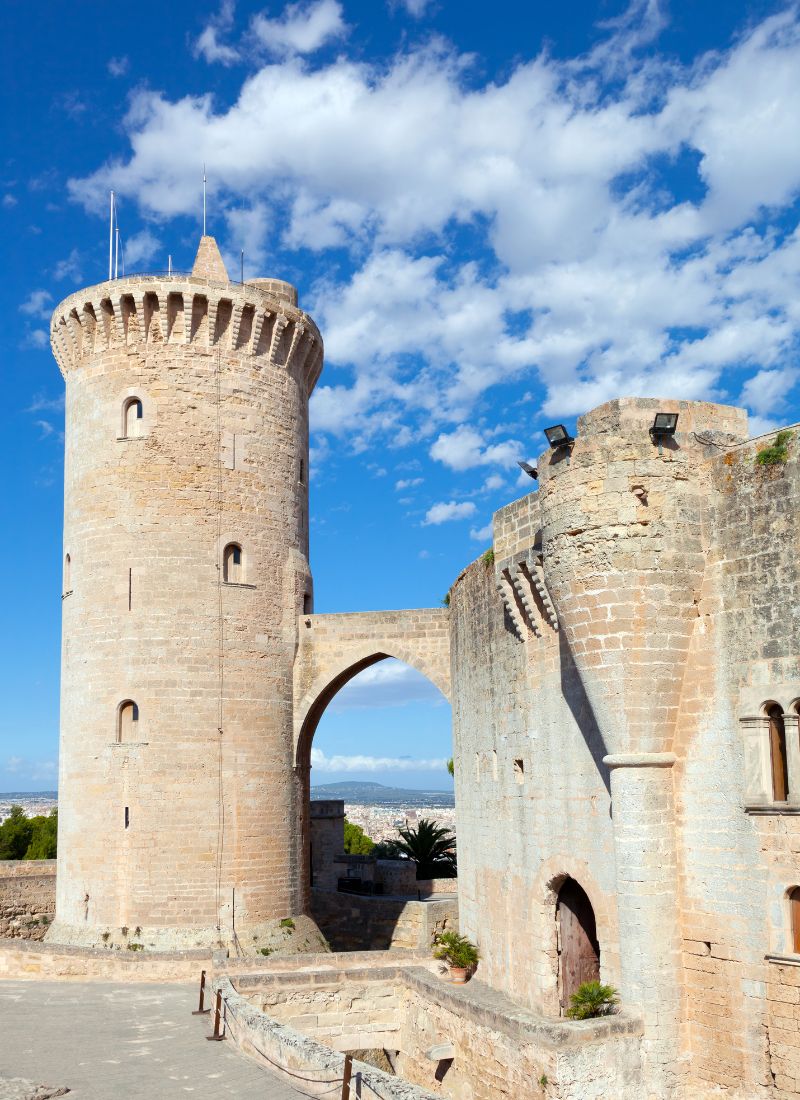
Museums and Temporary Exhibitions
Inside the castle’s stone halls, I wandered through a mix of permanent museum displays and changing exhibitions. The main museum rooms tell Palma’s story and share how Bellver Castle served as a royal home, a prison, and a stronghold.
Glass cases show artifacts like old coins, maps, and tools from past centuries. I liked reading the short descriptions—sometimes only in Spanish, so a translation app helps.
Some rooms have interactive screens for the curious. Occasionally, the castle hosts temporary art or history shows.
When I visited, local artists had a small exhibit on Mallorca’s wildlife. The mix of old stone, modern art, and ancient relics made every turn a surprise.
Planning Your Bellver Castle Adventure: Tips and Nearby Attractions
Visiting Bellver Castle ended up being so much more than just seeing an old fortress. I got to explore Palma, discover hidden corners of the island, and see how easy it is to get around Majorca.
Here’s what I learned about getting there, making the most of your day, and finding nearby escapes.
Getting to Bellver Castle: Transport & Direct Flights
I flew straight into Palma de Mallorca Airport, which connects to cities all across Europe. For me, the easiest way to reach Bellver Castle was by taxi or bus.
Public Bus Line 3 drops you off a short walk from the castle gates. Taxis are quick, but honestly, some of the best views start when you walk up the pine-shaded hill—I found that part both peaceful and scenic.

Image Source: Flickr
Transport Options Table:
| Option | From | Time | Notes |
|---|---|---|---|
| Taxi | Palma center | 10 mins | Fast, slightly more expensive |
| Bus Line 3 | Various locations | 20 mins | Budget-friendly, moderate walk up to the entrance |
| On Foot | Palma center | 40 mins | Steep uphill, beautiful but active day |
There are also direct flights to Palma from London, Madrid, Frankfurt, Paris, and other big cities. I booked my flight early for the best rates, especially in summer.
Combining Bellver with Other Majorca Highlights
After I wandered through Bellver Castle, exploring Palma de Mallorca’s Old Town just made sense. The Gothic Palma Cathedral stands less than 3 km away, tucked among narrow cobblestone streets.
I stopped at a few local cafes for coffee and pastries. Those little breaks before heading to the lively markets really made the day feel special.
Later, I took it easy and strolled along the tree-lined Passeig Marítim by the waterfront. The Es Baluard Museum of Modern and Contemporary Art sits nearby—honestly, it’s a great stop if you love art.
If you’re in the mood for shopping, check out Jaime III Avenue. It’s a well-known shopping street only a few minutes’ drive from the castle, and the local boutiques there sell some lovely handmade goods and souvenirs.
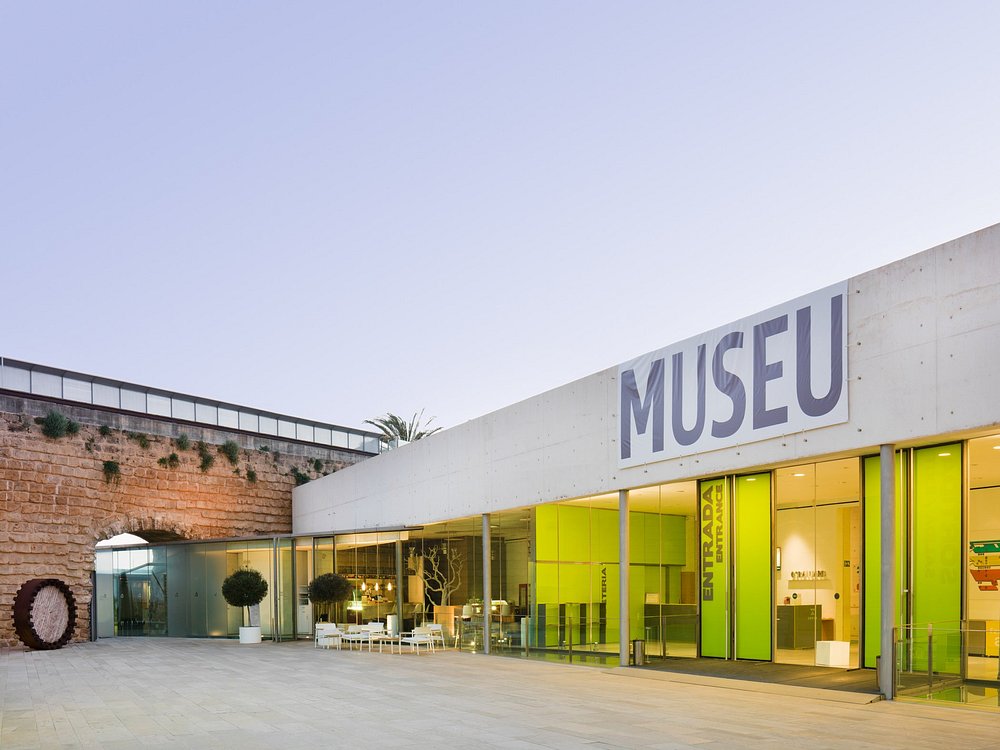
Image Source: Tripadvisor
Suggested Day Trips: Cala Agulla, Alcudia, and Inca
To wrap up my trip, I grabbed a rental car and set out for some of Majorca’s most beautiful spots.
Cala Agulla sits about an hour northeast. The sandy beach and that insanely clear water? Just wow.
I spent the morning swimming, then lounged in the shade under pine trees. Honestly, I could’ve stayed all day.
Alcudia quickly became another favorite. You can wander the walled Old Town at your own pace.
There’s so much history here, plus markets and those little restaurants you stumble upon.
On a different day, I hopped on the train to Inca. Thursdays are wild—this town hosts one of the island’s biggest markets.
Locals and visitors pack the streets, and the energy feels contagious.
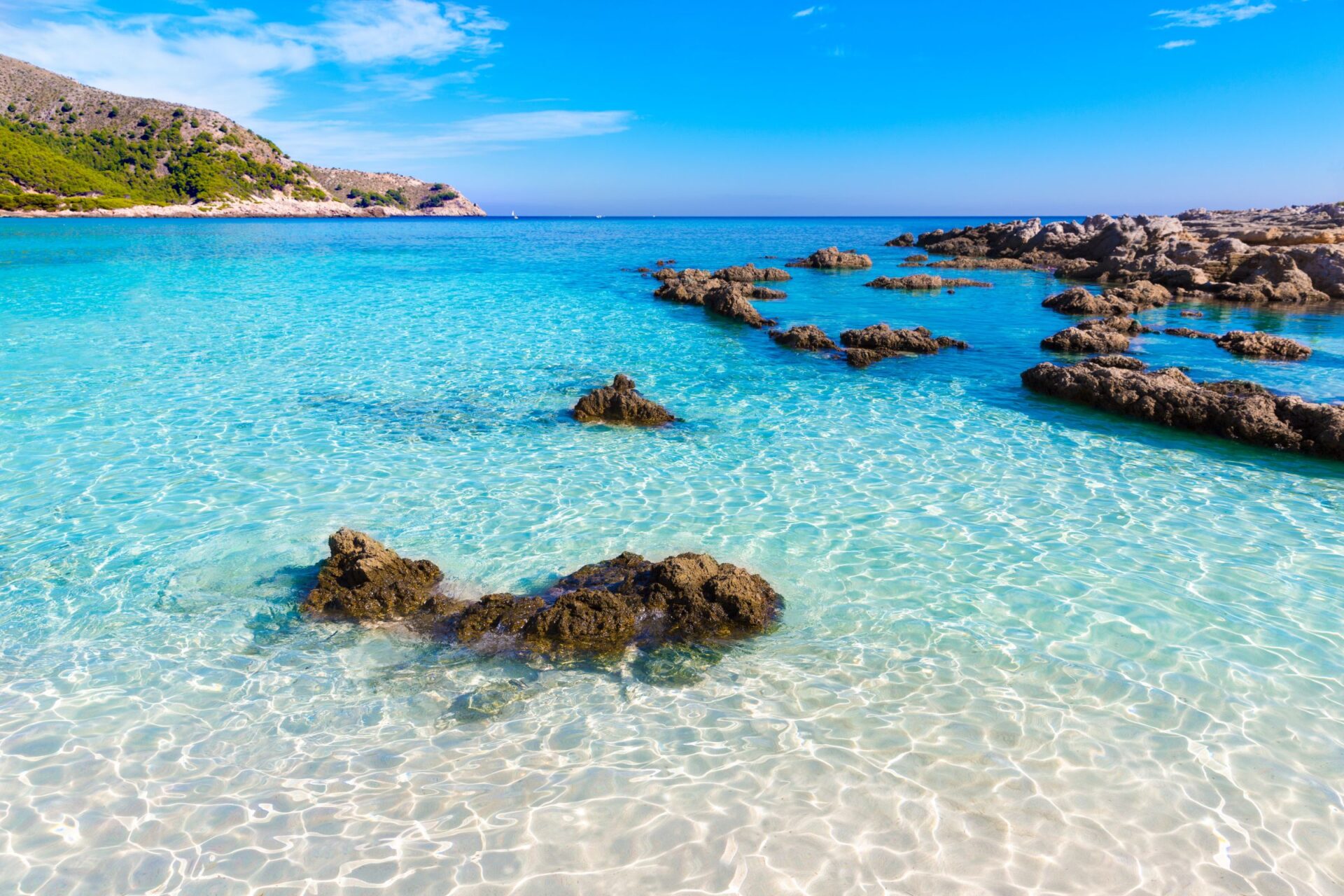
Favorite Day Trips Recap:
- Cala Agulla: If you love the beach, go early for the best vibe.
- Alcudia: Medieval streets and some really good local food.
- Inca: Totally authentic, especially when the market’s on.
With a bit of planning, you can see a lot of Majorca. Mixing in historic sights, beaches, and markets made the whole trip way more memorable for me.

